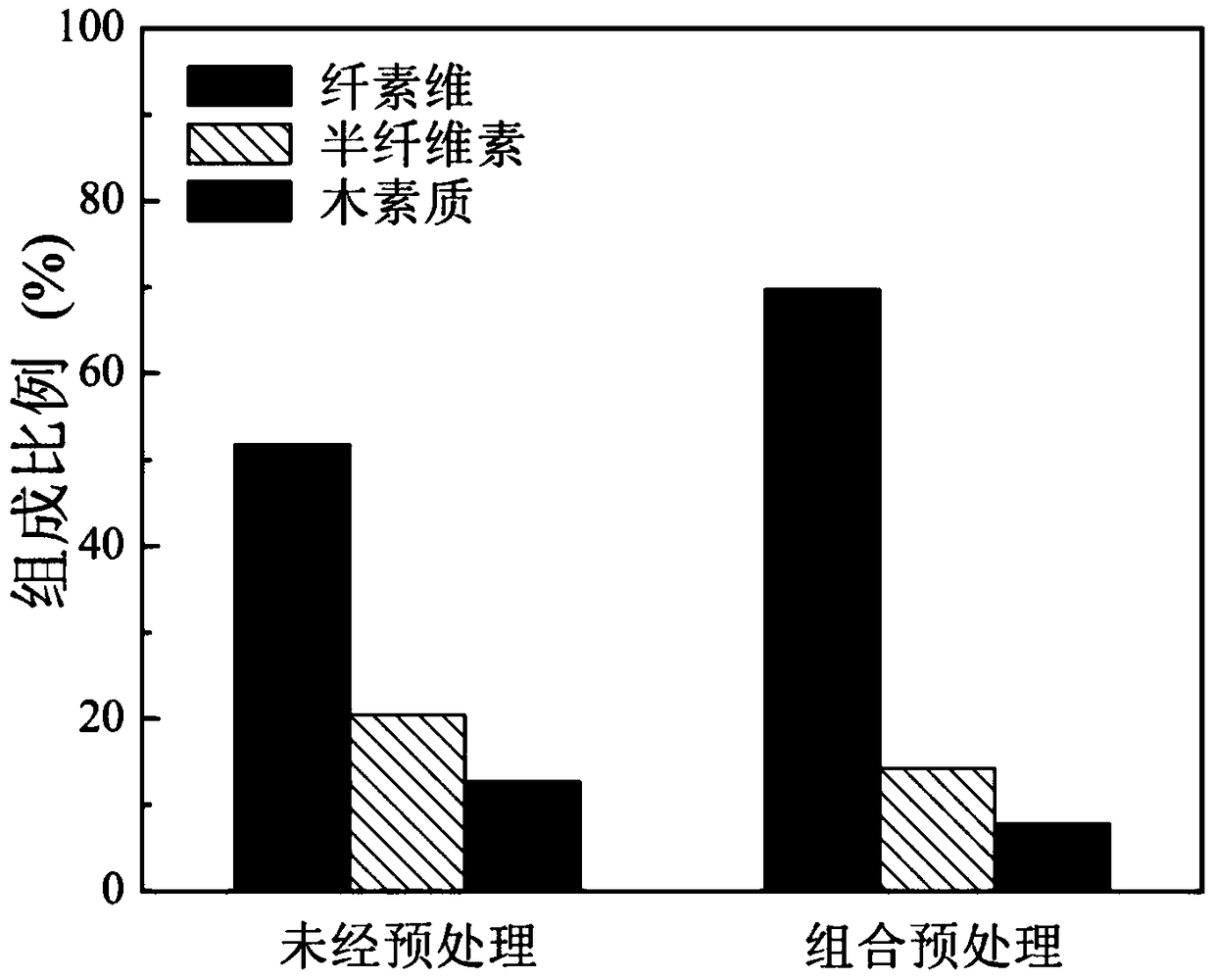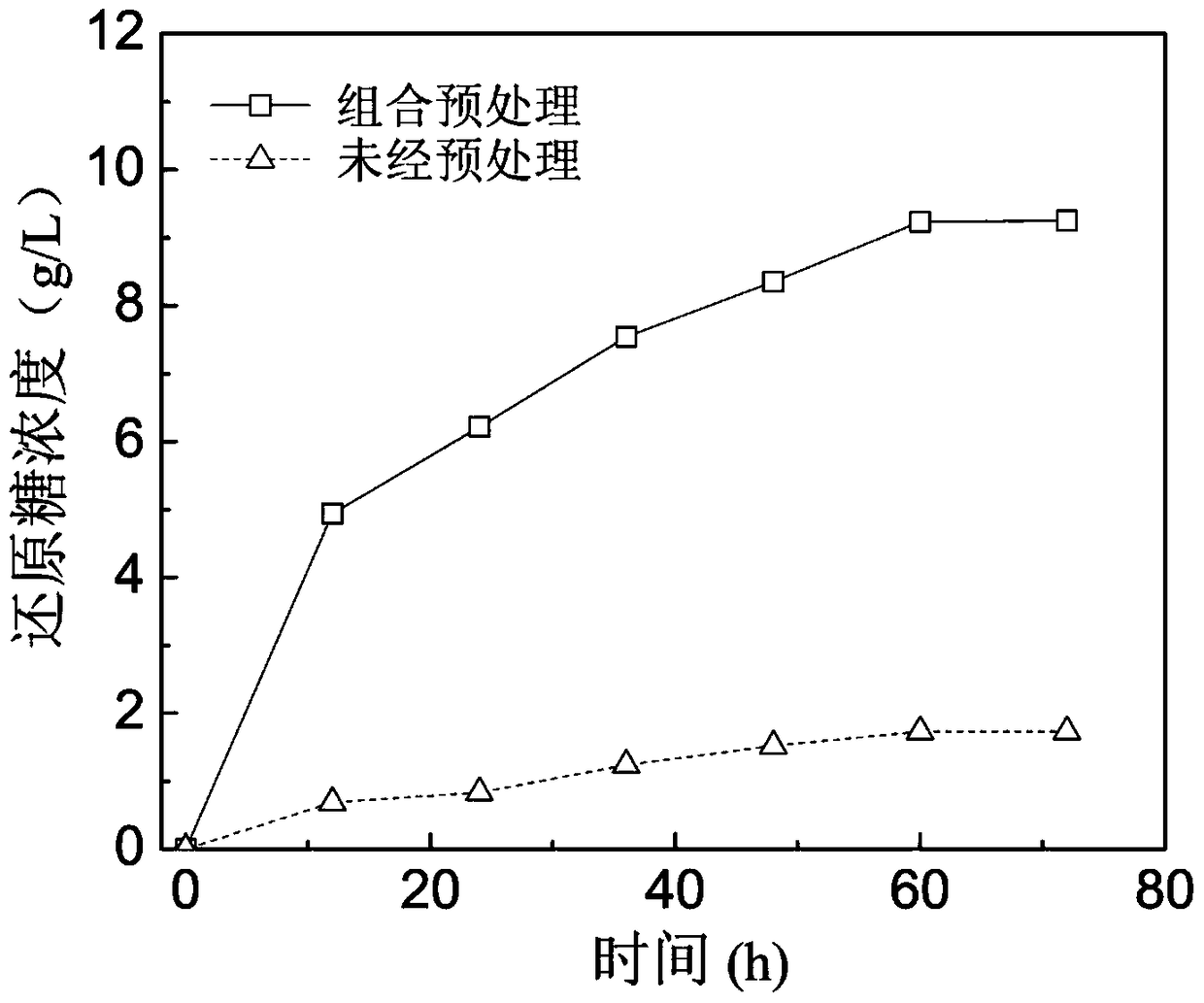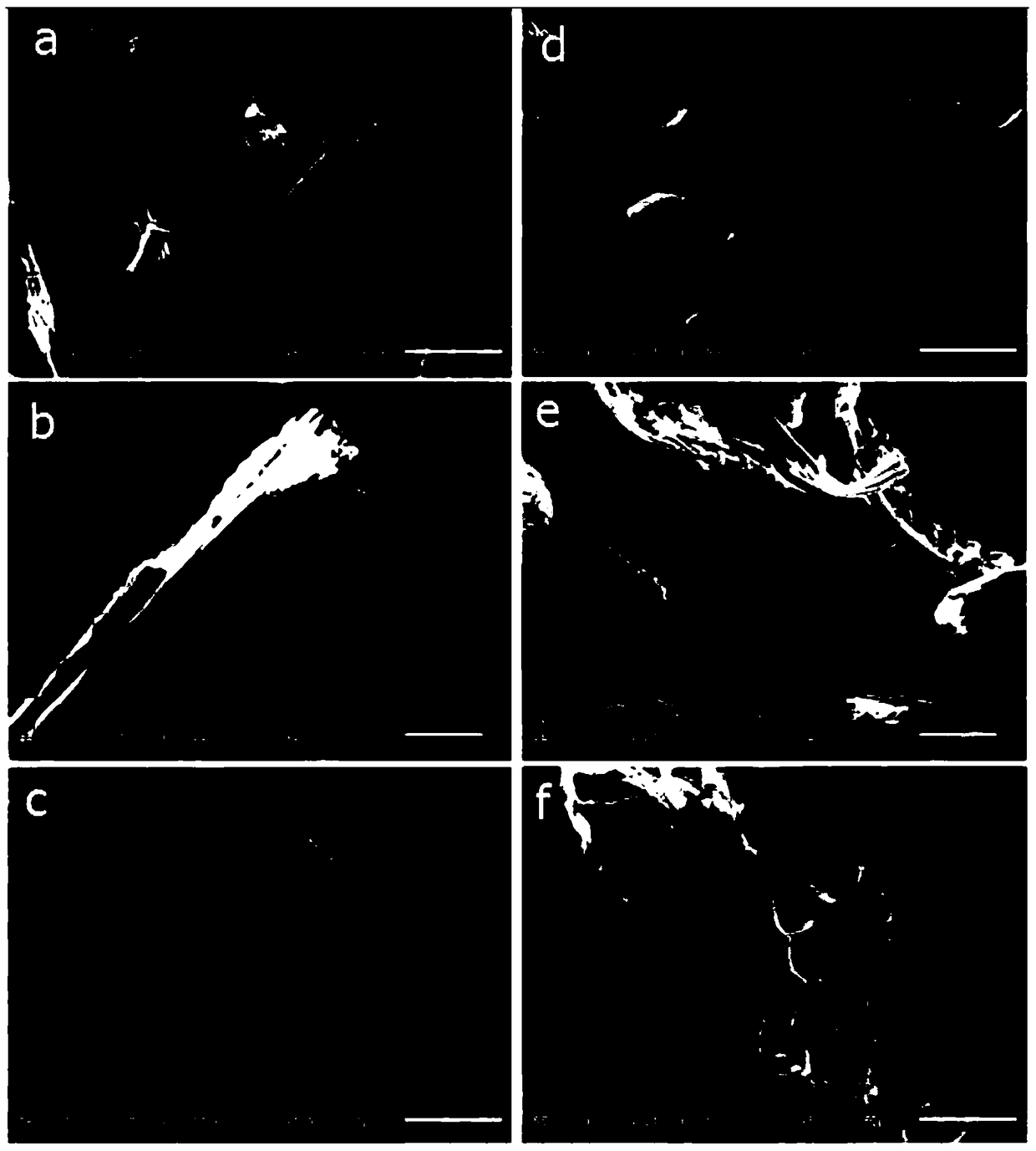A bio-chemical combined treatment process to improve lignocellulose saccharification effect
A lignocellulose and chemical combination technology, which is applied in the field of lignocellulose to prepare bioethanol pretreatment, can solve the problems of increased difficulty, excessive time, mild treatment conditions, etc., and achieves low equipment investment, increased economic benefits, and improved treatment mild conditions
- Summary
- Abstract
- Description
- Claims
- Application Information
AI Technical Summary
Problems solved by technology
Method used
Image
Examples
Embodiment 1
[0026] (1) After crushing the rice straw, sieve it through a 40-mesh sieve, wash it twice with ultrapure water, and dry it at 55°C to constant weight;
[0027] (2) Inoculate the LD-1 cells stored on the LB slope into the LB liquid medium, and cultivate at 30° C. for 18 hours to obtain the seed liquid of LD-1;
[0028] (3) Wherein said LB liquid culture medium each composition ratio is: peptone 10g, yeast powder 5g, sodium chloride 10g, distilled water 1L, described LB inclined-plane is the agar that adds 15g / L on the basis of above-mentioned prescription;
[0029] (4) Centrifuge the LD-1 seed solution obtained in the previous step for 5 minutes at 8000 rpm, discard the supernatant, and collect the thalline;
[0030] (5) further inoculate the collected LD-1 thalline into lignocellulose liquid culture medium according to 10% (volume ratio) inoculum amount, and cultivate for 4 days at a temperature of 30° C. at natural pH;
[0031] (6) wherein the proportion of each component of...
Embodiment 2
[0037] (1) After crushing the rice straw, sieve it through a 40-mesh sieve, wash it twice with ultrapure water, and dry it at 55°C to constant weight;
[0038] (2) Inoculate the LD-1 cells stored on the LB slope into the LB liquid medium, and cultivate at 30° C. for 18 hours to obtain the seed liquid of LD-1;
[0039] (3) Wherein said LB liquid culture medium each composition ratio is: peptone 10g, yeast powder 5g, sodium chloride 10g, distilled water 1L, described LB inclined-plane is the agar that adds 15g / L on the basis of above-mentioned prescription;
[0040] (4) Centrifuge the LD-1 seed solution obtained in the previous step for 5 minutes at 8000 rpm, discard the supernatant, and collect the thalline;
[0041](5) further inoculate the collected LD-1 thalline into lignocellulose liquid culture medium according to 10% (volume ratio) inoculum amount, and cultivate for 4 days at a temperature of 30° C. at natural pH;
[0042] (6) wherein the proportion of each component of ...
Embodiment 3
[0048] (1) After crushing the rice straw, sieve it through a 40-mesh sieve, wash it twice with ultrapure water, and dry it at 55°C to constant weight;
[0049] (2) Inoculate the LD-1 cells stored on the LB slope into the LB liquid medium, and cultivate at 30° C. for 18 hours to obtain the seed liquid of LD-1;
[0050] (3) wherein said LB liquid culture medium each composition ratio is: peptone 10g, yeast powder 5g, sodium chloride 10g, distilled water 1L; Described LB slant is to add the agar of 15g / l on the basis of above-mentioned prescription;
[0051] (4) Centrifuge the LD-1 seed solution obtained in the previous step for 5 minutes at 8000 rpm, discard the supernatant, and collect the thalline;
[0052] (5) further inoculate the collected LD-1 thalline into lignocellulose liquid culture medium according to 10% (volume ratio) inoculum amount, and cultivate for 4 days at a temperature of 30° C. at natural pH;
[0053] (6) wherein the proportion of each component of the lign...
PUM
 Login to View More
Login to View More Abstract
Description
Claims
Application Information
 Login to View More
Login to View More - R&D
- Intellectual Property
- Life Sciences
- Materials
- Tech Scout
- Unparalleled Data Quality
- Higher Quality Content
- 60% Fewer Hallucinations
Browse by: Latest US Patents, China's latest patents, Technical Efficacy Thesaurus, Application Domain, Technology Topic, Popular Technical Reports.
© 2025 PatSnap. All rights reserved.Legal|Privacy policy|Modern Slavery Act Transparency Statement|Sitemap|About US| Contact US: help@patsnap.com



